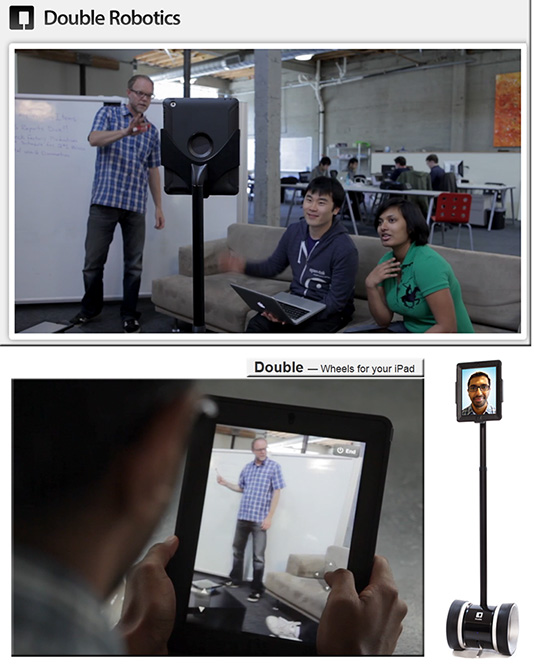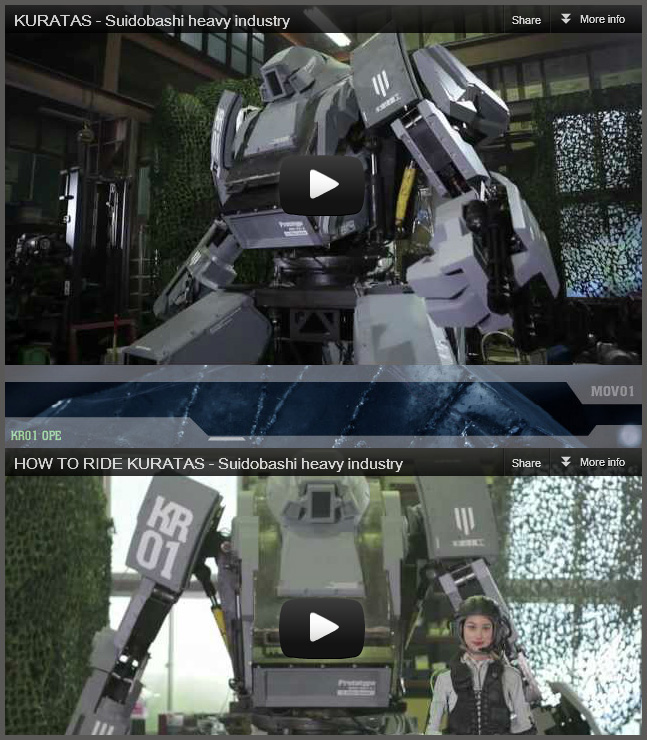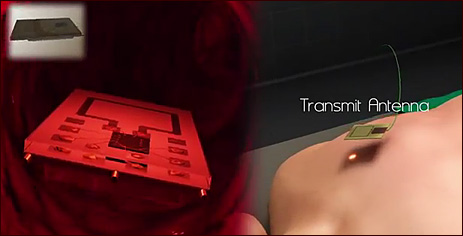Robot vs. human: Drum cover of classic punk hit by The Ramones — from singularityhub.com by David J. Hill
Cheetah Robot runs 28.3 mph; a bit faster than Usain Bolt
DARPA’s robotic cheetah, developed by Boston Dynamics, runs faster than Usain Bolt. (DARPA)
Bonus postings! 🙂
- ROBO-ONE 21: Championship Match (Video) — from robot dreams
Garoo faces off against Cortejyu Miharusu in the final match for the ROBO-ONE 21 Championship. Garoo is the defending champion and the crowd favorite. By tempusmaster. -
A desktop Singularity: Security cam footage of The Technological Singularity as it actually happened — by Socrates <– From DSC: also could be called, “Watch out how hard you hit your computer!” 😉
13-foot 12,000-pound mechanized robot suit now for sale in Japan — from venturebeat.com by John Koetsier
Also see:
and:
From DSC:
These items cause me to reflect yet again on the state of our hearts...as it doesn’t take much to think of the next steps in terms of using such robots as instruments of war. Do you think I’m stretching a bit too far here? How about after considering the following interactive visualization that Google just created?
.
Addendums:
- [On 8/28/12] How about after reading This week in bots: The robots we build to kill for us — from fastcompany.com by Kit Eaton?
- [On 10/4/12] Homeland Security wants drones for public safety, doesn’t want to tell public about them — from spectrum.ieee.org by Evan Ackerman
The Avatar Economy –– from Technology Review by Matt Beane
Are remote workers the brains inside tomorrow’s robots?
.
In warehouses, Kiva’s robots do the heavy lifting — –– from Technology Review by Verne Kopytoff
Fast pace, low margins have online retailers looking to automation to keep up.
.
This Week In Bots: Will robots cause even more human unemployment? — from FastCompany.com byKit Eaton
The expanding landscape of tech support opportunities — from parksassociates.com
Excerpt:
The connected home phenomenon – where products and services are linked together to share computing resources and information – is reshaping the competitive landscape among service providers, retailers, and consumer electronics companies.
The lines that defined and separated the different roles for each consumer product have blurred. No longer does a service provider remain the sole provider of communications or entertainment services. A retailer or OEM may have been the primary beneficiary of extended warranty revenues; now, some service providers are offering these plans as part of their premium tech support services. These changes are creating new opportunities to provide tech support services to consumers to help manage/support these devices in the home.
The less glamorous careers: Advice and fact — from by Stephanie Brooks — with special thanks to Kelsey Doyle for bringing this to my attention
Excerpt:
Few children tout that they want to be an accountant or a petroleum engineer when they grow up, even if the expertise required by those jobs make them amongst the highest paying careers. Rather, children have big dreams about becoming actors, artists, or writers with a little bit of fame, animal care workers, and firemen, rescuing babies from blazing houses. Such careers seem glamorous to children, as they are fraught with adventure and romanticism. However, as you get older, you realize that some of your childhood career choices are not as glamorous as they originally seemed. The pay in these career paths often leave something to be desired. It can be difficult to find a legitimate job within the field, with lower demand. Some of the jobs that once seemed heroic only seem dangerous and risky. Adult practicality sets in, steering many college students towards business, marketing, and other fruitful majors with relatively high success rates within the job world.
With the recession, new graduates flounder to find jobs, accepting positions that help them pay their bills rather than fulfill their dreams. However, there are still a brave few that pursue their childhood aspirations. These tough career paths require tremendous personal drive, a touch of luck, and in many cases, the ability to handle failure, excessive stress, and potential pay cuts. The following jobs are just a handful of the most popular career choices strived for by children. Upon further examination, many of them may not be all they’re cracked up to be.
.
From DSC:
Note the job descriptions further on down the page at shapetheworld.fr! These are the types of jobs that may likely be in demand in the near future. Are we ready?
See also:
From DSC:
The above video reminds me why I posted this one.
Braver, newer literary worlds — from futurebook.mit.edu by Debra Di Blasi
Description of videos:
The following video (in two parts) was part of my presentation to the Louisville Conference of Literature, February 2012. I am presenting a more extensive multimedia paper at the International Book Conference in Barcelona, June 29-July 2, 2012.
Also see:
- Who’s responsible when robots kill? ‘We Robot’ Conference hunts answers — from Mashable.com by Peter Pachal
. - Goldman to fire employees who can be replaced by technology, miss performance targets — from HuffingtonPost.com by Lauren Tara LaCapra
. - The robots are coming! Better get used to it — from CNET.com by Stephen Shankland
Robots are widely used now, and they’re only spread even farther into daily life. The sci-fi future may be closer than you think.
.
Opinion from DSC:
Technologies — by themselves — are neither good nor bad. It’s what we do with them that makes them good or bad. The concerns I have are when people try to play God. His ways are higher than our ways, and his thoughts are higher than our thoughts. So when the We Robot Conference puts up a banner that would normally look like the hand of God touching a human hand — but in their case, they put a robot’s hand reaching out to touch a man’s hand — something just doesn’t set well with me re: that image.
Don’t get me wrong. I think robotics can be very helpful — especially in manufacturing, fire safety, other. But in some of the robotics space/spheres of work, when we think we can “do better” than the LORD — to make a better mind than what He gave us — I get a bit nervous.
Tiny, implantable medical device can propel itself through bloodstream — from Stanford University by Andrew Myers
Tiny, implantable medical device can propel itself through bloodstream
Excerpt:
For fifty years, scientists had searched for the secret to making tiny implantable devices that could travel through the bloodstream. Engineers at Stanford have demonstrated a wirelessly powered device that just may make the dream a reality.
.
Controlling Protein Function With Nanotechnology — from Rensselaer Polytechnic Institute
.
CIMIT — example posting:
- “How to Catch a Wave in Medical Robotics” Presented by CIMIT Investigator on March 2, 2012
.
Addendums on 7/24/12:
- High-Tech Home Care — from connectedworldmag.com
- http://www.ageinplacetech.com/
- New class of future doctors will learn on simulators — from thestate.com by Andrew Shain






















